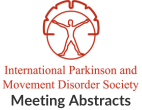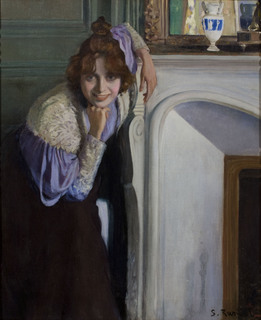Session Information
Date: Tuesday, September 24, 2019
Session Title: Education / History in Movement Disorders
Session Time: 1:45pm-3:15pm
Location: Agora 2 West, Level 2
Objective: Our aim is to analyze how the Catalan picture Laughing Girl (La Risueña)could be a depiction of geste antagoniste.
Background: Santiago Rusiñol was a prolific Catalan painter and writer, a contemporary of Gaudi, who would suffer from morphine addiction later in his life. Among his many portraits of his wife and muse, Luisa Denis, Laughing Girl (La Risueña) depicts a woman holding her chin while smiling at the viewer.
Method: We make a brief historical review of Santiago Rusiñol’s life and work and also analyze the features of the portrait Laughing Girl and whether this could be a depiction of geste antagoniste.
Results: Laughing Girl (La Risueña) is a portrait painting by Catalan artist Santiago Rusiñol of his muse and wife, Lluisa Denis. In the painting, a young woman is depicted with her left arm awkwardly resting upon a mantlepiece, while at the same time she’s holding her chin with her right arm positioned straight in the air and smiling at the viewer. Her smile seems a bit unnatural, and could possibly be a dystonic grimacing so that her right fist placed below her chin would act as a geste antagoniste to alleviate her focal dystonia. The way the model places her left arm on the mantlepiece could even suggest a more pronounced, segmental distribution of dystonia.
Conclusion: Santiago Rusiñol’s portrait of his wife, aptly named Laughing Girl (La Risueña), might be a depiction of geste antagoniste to ameliorate focal facial dystonia.
To cite this abstract in AMA style:
F. Germiniani, P. Marques, L. Pinheiro, G. Franklin, G. Ribas, H. Teive. Geste antagoniste in Catalan art – Santiago Rusiñol’s Laughing Girl [abstract]. Mov Disord. 2019; 34 (suppl 2). https://www.mdsabstracts.org/abstract/geste-antagoniste-in-catalan-art-santiago-rusinols-laughing-girl/. Accessed October 19, 2025.« Back to 2019 International Congress
MDS Abstracts - https://www.mdsabstracts.org/abstract/geste-antagoniste-in-catalan-art-santiago-rusinols-laughing-girl/

